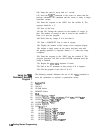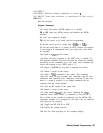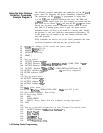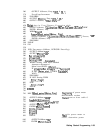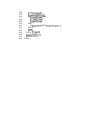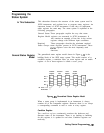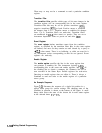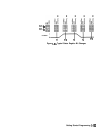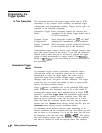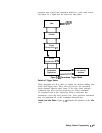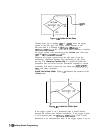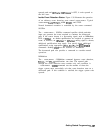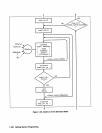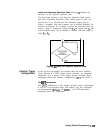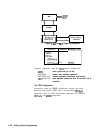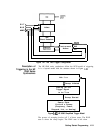
Programming the
Trigger System
In This Subsection
This subsection discusses the layered trigger model used in SCPI
instruments. It also outlines some commonly encountered trigger
configurations and programming methods. Trigger system topics are
explained in the following paragraphs:
Generalized Trigger These paragraphs explain the structure and
Model
components of the layered trigger model used in
all SCPI instruments.
Common Trigger These paragraphs explain the
INIT
and TRIG
Configurations
configurations implemented in the synthesizer.
Trigger Command These paragraphs provide condensed definitions
Definitions for the keywords used in this subsection.
Understanding trigger systems requires more technical expertise than
most other topics covered in this section. If you find this subsection
difficult, keep in mind that you do not have to program the trigger
system to make measurements or output signals. Using
MEASure,
READ, or
INITiate,
you can avoid having to learn the information in
this subsection.
Generalized Trigger
Model
Overview
An instrument trigger system synchronizes instrument actions
with specified events. An instrument action may be to make a
measurement or source an output signal. The events used to
synchronize these actions include software trigger commands,
changing signal levels, and pulses on BNC connectors.’ The trigger
system also lets you specify the number of times to repeat certain
actions, and delays between actions.
Figure
l-35
shows a simplified view of the generalized SCPI trigger
model. Instruments may implement some or all of this model, to
accommodate varying needs. Each unshaded block in Figure
l-35
represents a particular trigger state. The generalized trigger model
allows an arbitrary number of event- detection states. Note that
there can be two paths into a state and two paths out of a state.
These are called the downward entrance and exit, and the upward
entrance and exit. Upward means moving towards the idle state and
downward means moving towards instrument actions.
An instrument moves between adjacent states, depending on its
internal conditions and the commands that you send. When you first
turn on power to an instrument, it is in the idle state. You can force
the instrument to the idle state using :
ABORt
or
*RST.
The initiate
and event detection trigger states are essentially a list of conditions
that must be satisfied to reach the adjacent states. The sequence
l-1
04 Getting Started Programming



